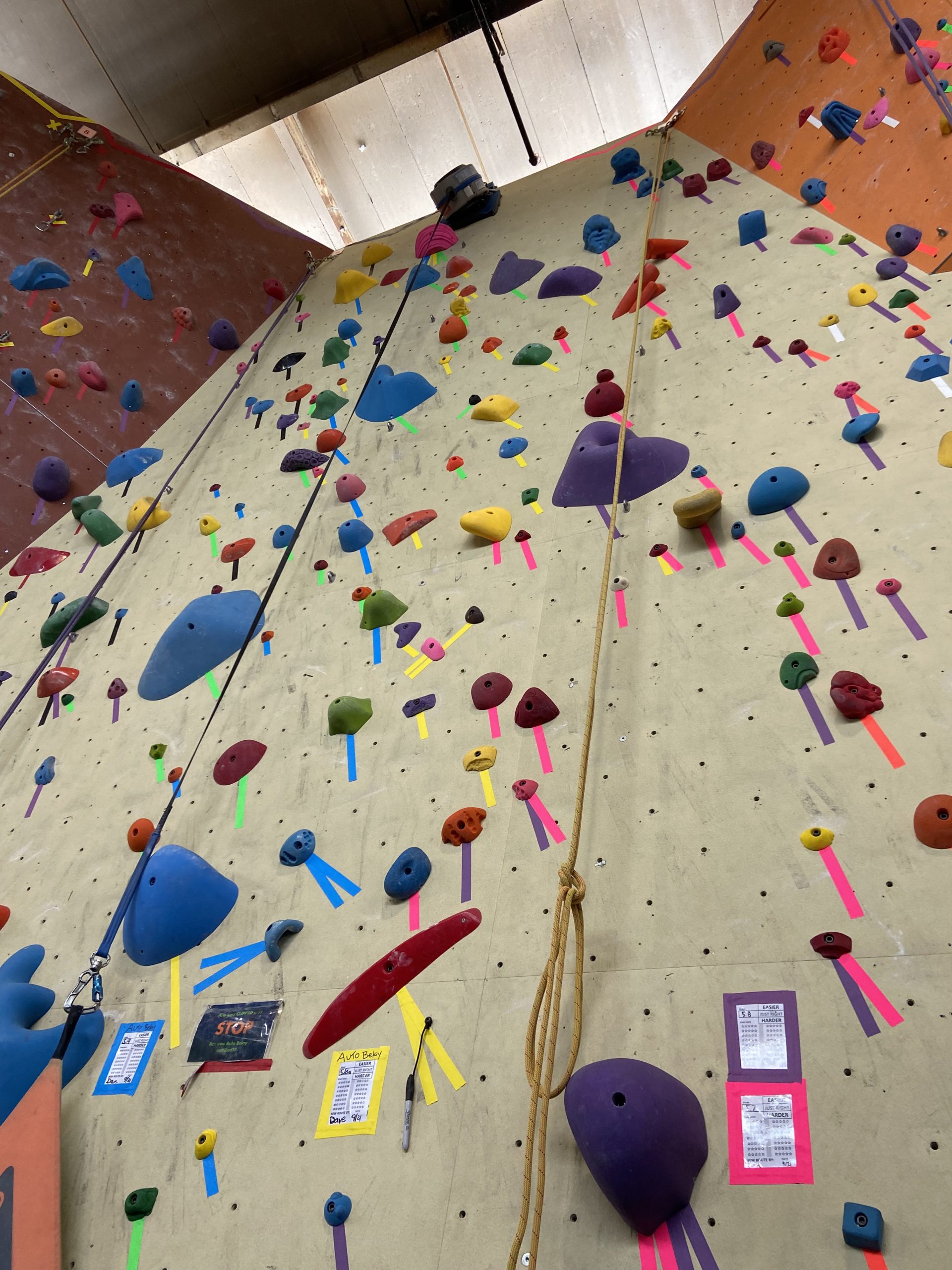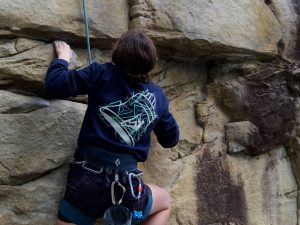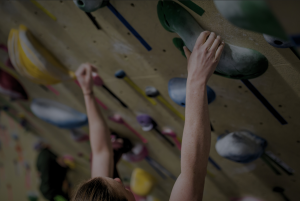Use Drop-Knees with Steeper Climbs
Steep climbing is where drop knees really shine. The ability of the oppositional foot to keep a lock on getting the hips over the heel and the twist at getting the hips against the wall is invaluable.
Deadpointing and Drop-Knees
When deadpointing, climbers should aim to begin the move in a straight-armed position (for both arms). This generally requires a front step or toe-in position on the feet. With both feet on the wall, a good drop knee will allow a climber to begin from this position. The climber then twists into the lower body lock, and pushes quickly into the upper body lock and deadpoint in one fluid motion.
This allows you to generate momentum from the act of twisting. You can translates that rotational momentum into upward movement through the deadpoint and tension in your back.
The Full Drop-Knee
In a previous article, we have described the drop-knee as it is most commonly used. You use an outside edge with an oppositional foot pushing your hips onto the back heel. While this is the most common form of drop-knee, it is not where it got its name.
The name comes from a specialized application of this position found exclusively (at least in a useful sense) at harder grades, and almost exclusively on steeper angles.
The Drop-Knee in 4 Steps
ONE: From starting holds (one being aside-pull), place your higher foot on a foothold between waist and shoulder height, and to the side of your starting holds. This foot will be the “drop knee”. The hand on the opposite side of your body should be on the side-pull.
TWO: Place your lower foot wide of the start holds, but on a foothold below your waist.
THREE: To initiate the move, rotate your upper foot from a front-step into an outside edge, while pushing your oppositional leg straight. This will require that you turn your knee first in toward the wall, then pointing downward, placing your thigh against the plane of the wall, locking the lower body into the wall.
FOUR: Complete the movement of your upper body as you would for a typical twist-lock.
Full Drop-Knee Extreme Version of the Drop-Knee
As should be obvious, this move is essentially the same as the drop-knees we learned previously, just in a more extreme way.
The full drop-knee is not a common move. However, it has the benefit when the feet are in the optimal position of being able to lock the climber into a position with significant leverage. This leverage does an admirable job of greatly reducing the amount of weight your arms must carry. It locks out your hips into a tensioned position where they are literally suspended from your feet. They are wedged into position by your legs.
In addition, the twist-lock position effectively allows you to lock off very low, increasing your static reach by a significant amount.
Effective at Steeper Angles
It should be noted that while such extreme drop-knees can be used on lower angles, their frequency and effectiveness increase substantially as the angle gets steeper.
All material is reprinted with the permission of the author. Copyright 2022 David H. Rowland. All rights reserved.









